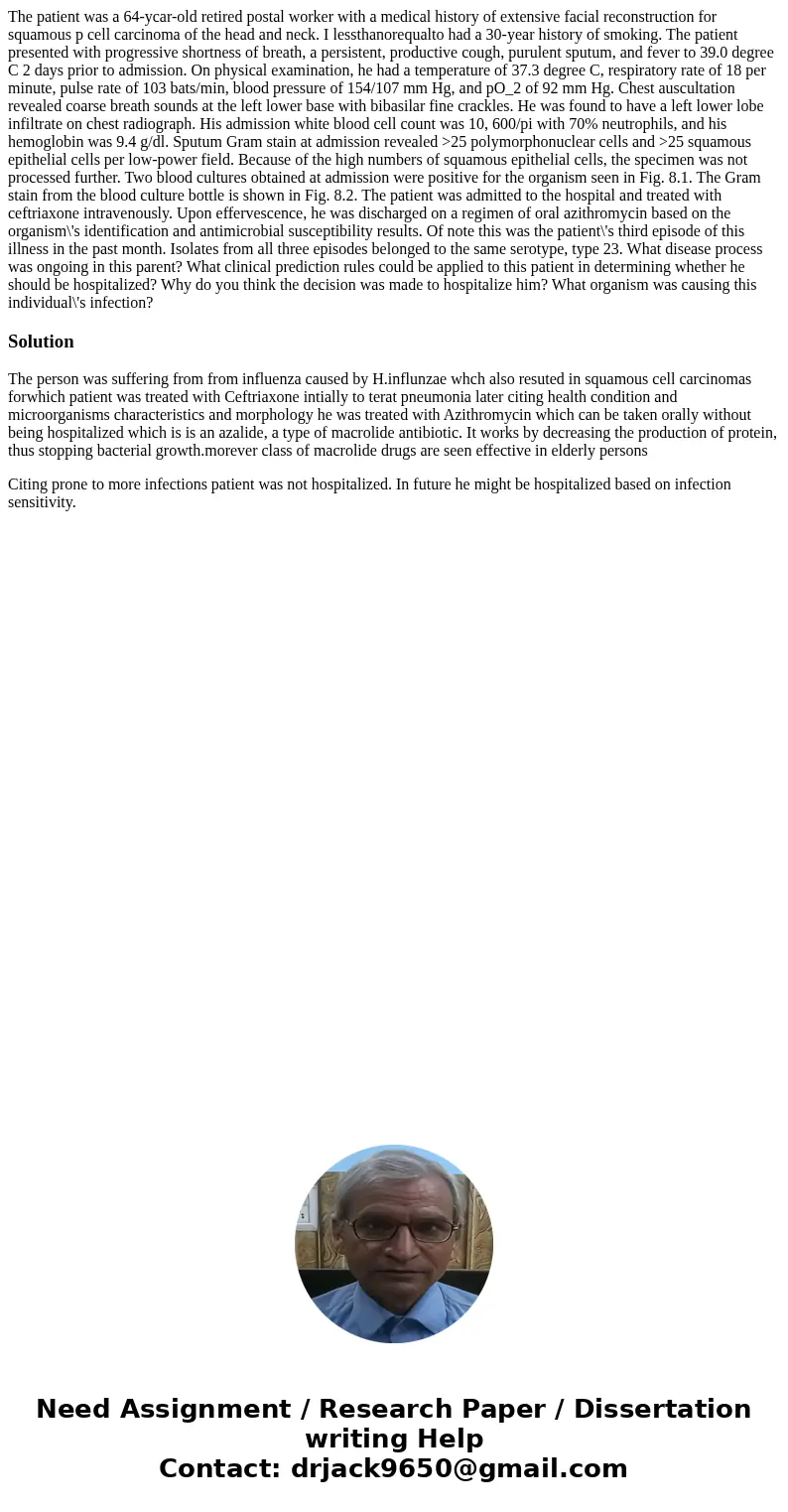The patient was a 64ycarold retired postal worker with a med
The patient was a 64-ycar-old retired postal worker with a medical history of extensive facial reconstruction for squamous p cell carcinoma of the head and neck. I lessthanorequalto had a 30-year history of smoking. The patient presented with progressive shortness of breath, a persistent, productive cough, purulent sputum, and fever to 39.0 degree C 2 days prior to admission. On physical examination, he had a temperature of 37.3 degree C, respiratory rate of 18 per minute, pulse rate of 103 bats/min, blood pressure of 154/107 mm Hg, and pO_2 of 92 mm Hg. Chest auscultation revealed coarse breath sounds at the left lower base with bibasilar fine crackles. He was found to have a left lower lobe infiltrate on chest radiograph. His admission white blood cell count was 10, 600/pi with 70% neutrophils, and his hemoglobin was 9.4 g/dl. Sputum Gram stain at admission revealed >25 polymorphonuclear cells and >25 squamous epithelial cells per low-power field. Because of the high numbers of squamous epithelial cells, the specimen was not processed further. Two blood cultures obtained at admission were positive for the organism seen in Fig. 8.1. The Gram stain from the blood culture bottle is shown in Fig. 8.2. The patient was admitted to the hospital and treated with ceftriaxone intravenously. Upon effervescence, he was discharged on a regimen of oral azithromycin based on the organism\'s identification and antimicrobial susceptibility results. Of note this was the patient\'s third episode of this illness in the past month. Isolates from all three episodes belonged to the same serotype, type 23. What disease process was ongoing in this parent? What clinical prediction rules could be applied to this patient in determining whether he should be hospitalized? Why do you think the decision was made to hospitalize him? What organism was causing this individual\'s infection?
Solution
The person was suffering from from influenza caused by H.influnzae whch also resuted in squamous cell carcinomas forwhich patient was treated with Ceftriaxone intially to terat pneumonia later citing health condition and microorganisms characteristics and morphology he was treated with Azithromycin which can be taken orally without being hospitalized which is is an azalide, a type of macrolide antibiotic. It works by decreasing the production of protein, thus stopping bacterial growth.morever class of macrolide drugs are seen effective in elderly persons
Citing prone to more infections patient was not hospitalized. In future he might be hospitalized based on infection sensitivity.

 Homework Sourse
Homework Sourse